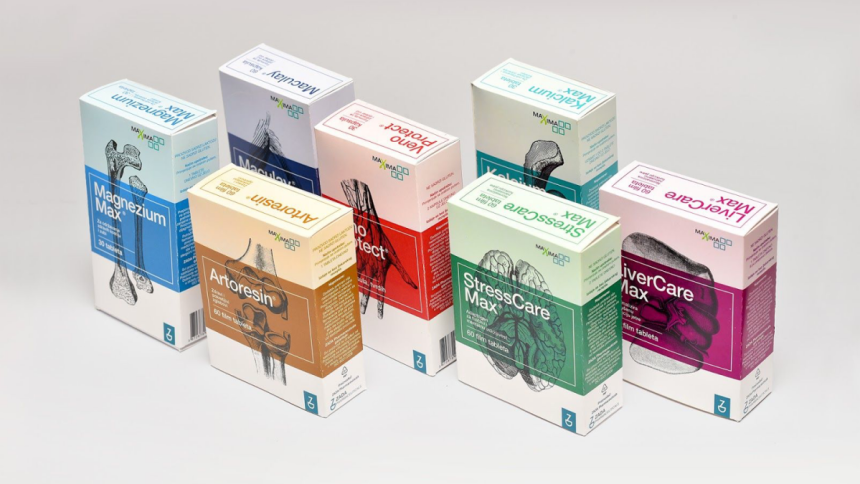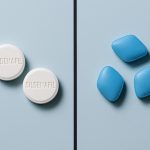Pharmaceutics is a trillion-dollar market with the United States as the major supplier, followed by countries like Japan, China, Germany, the UK, France, Canada, Italy, and Brazil. Projected to grow to 1.8 trillion dollars by 2026, its huge market base can be explained by the vitality of medicines in saving human lives.
‘Pharmaceutical drugs’ is a wide term that includes medicines and drugs used to prevent, detect, or treat different diseases. These medicines can be in solid, liquid, or powdered form, encased in bottles, vials, blisters, and ampoules. For packing these different containers, brands rely on custom medicine boxes wholesale as they can keep the primary packaging safe and accessible.
Packaging Classes for Medicines
Any drug or medicine goes through three different steps. Let’s explore these stages to realize the true vitality of medicine boxes:
- Primary packaging is material or container that encases the item or comes first in contact with it and can directly affect its shelf life. These include vials, sachets, blister packs, IV containers, bottles, etc.
- Secondary packaging is used to encase primary packaging or its groups together, using boxes, cartons, injection trays, and shipping containers.
- Tertiary packaging is used to pack and deliver bulk boxes and cartons using containers, barrels, edge protectors, etc.
Medicine Boxes for Primary Packaging
As stated earlier, primary packaging covers injections, bottles, blister packs, vials, etc. These various types are made from different materials like aluminium, glass, plastic, etc., and have unique layouts, sizes, and shapes. Let’s discuss how medicine boxes help in packing these different containers:
- Bottles: Brands mostly use boxes made with thick materials to pack medicinal bottles. The reason is that these bottles are made from delicate glass which can easily break during shipping or due to rough handling. Made with card stock and kraft, medicine or drug boxes prevent breakage and clients can also use them to store bottles for a long time.
- Injections: Injections have a distinct size and shape so they also need packaging that encases them effectively. Thus, brands create medicine boxes that are more in length and less in width to fit injections in them. Injections also differ in size so brands create boxes that fit to their sizes and prevent free motion.
- Vials: Brands use vials to encase liquids and powders as they are also made from glass which is delicate and needs ample safety during delivery. Medicine boxes come to the rescue here as well and protect vials from breakage on the way or while being unloaded from containers.
- Blister Packs: Made from aluminium, blister packs need minimal safety relatively, during transport. Moreover, clients also need boxes to store blister packs as they consume tablets over a long period. Thus, brands opt for custom medicine packaging boxes made with card stock that is durable and easily store items that are light in weight.
Medicine Boxes for Diverse Uses
Brands also create drug packaging based on users’ needs. These include:
i. Hang tab
This drug packaging comes with a hang tab on top to allow brands to hang it on walls or holders created in counter display and floor display boxes. The hang tab is made with robust kraft or corrugated material so the packaging doesn’t fall off upon rough handling. This feature also gives a unique display to items and raises their visibility.
ii. Pill Organizers
These boxes are made for storing different types of pills and tablets in a manageable way. The boxes come with different cubicles that allow long-term patients to keep their pills and tablets in each of them and keep track of their drug intakes. Brands usually make these boxes with a plastic material that ensures safety for a long time. The magnetic or other locking system enables users to open the box without putting much effort.
iii. First Aid Boxes
Packaging brands have specially made these boxes for medicines that are needed in an emergency. They are made to store different types of medicines and special tools like gauze pads, eyewash, gloves, scissors, cold packs, spot bandages, dressing, and aspirin, among others. These things come in bottles, vials, injections, sachets, IV containers, etc. To protect all these things, first aid boxes are made from thick plastic materials like HDPE, LDPE, PET, etc.
iv. Smart Boxes
These medicine boxes come with smart features like QR codes, RFID tags, NFC, and alarms to improve user interface and drug management. Let’s have an overview of these major features:
- QR Codes: Patients can now view all the vital details about the medicine and the brand just by scanning QR codes printed on boxes. They can view videos, images, and texts for using medicines, their making and expiry dates, brand contact info, etc.
- NFC: Near Field Communication or NFC chips enable users to interact in real-time with phones having NFC apps. Users can view vital data on using medicines, cautions, daily drug intake, and dosage reminders.
- RFID Tags: Sensors or RFID tags are embedded in the boxes to monitor the surrounding conditions like humidity and temperature. The system sends an alert call to users or health care providers in case the storage conditions exceed the set ranges.
- Alarm: Smart medicine boxes come with an alarm system using light and sound as a way to alert patients when it’s time to take medicine. This feature is vital for long-term patients or those with memory issues.
Medicine Boxes with Diverse Layouts
Medicines or drugs need different types of boxes that fulfill certain marketing and safety needs. For this purpose, brands use medicine boxes created in different layouts and the most popular of them include:
- Auto lock Boxes: This is one of the most popular box types due to the safety that it promises to delicate glass bottles and vials. Auto lock boxes are made from sheets cut and folded earlier and joined together with glue or tape on the base. The flaps on the top are folded into each other enabling easy unboxing.
- Tuck Boxes: Another popular packaging for medicines is reverse tuck and straight tuck boxes due to their easy unboxing and maximum safety promise. Both these boxes have closing flaps on top and base that fold into each other creating a secure and easy locking system.
- Display Boxes: Some medicines need display like other items so brands use custom display boxes to exhibit them on shelves and counters. These boxes also come in diverse types like counter display, floor display, POP display, etc. These boxes raise brand visibility and enable users to easily check out and pick medicines.
Medicine is vital in saving human lives but what they need is packaging that prevents them from harm. CPP Boxes has been making secure and operative custom medicine boxes that follow market trends and meet clients’ needs. Make your brand known with our refined boxes and achieve your sales goals within no time.
Lynn Martelli is an editor at Readability. She received her MFA in Creative Writing from Antioch University and has worked as an editor for over 10 years. Lynn has edited a wide variety of books, including fiction, non-fiction, memoirs, and more. In her free time, Lynn enjoys reading, writing, and spending time with her family and friends.















